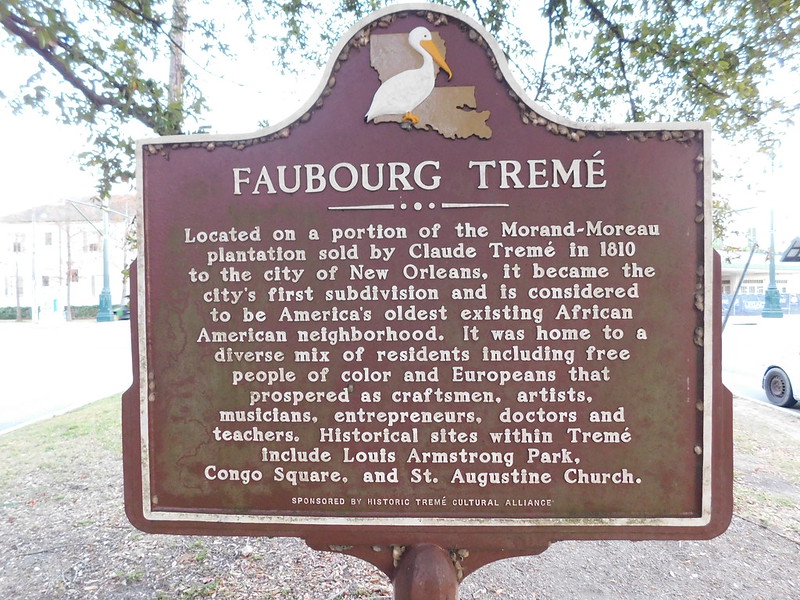Tremé – Lafitte Homes for Sale
Jazz clubs, soul food, second-line parades, colorful cottages, and storied landmarks celebrate the neighborhood’s African-American and Creole heritage.
Tremé is often referred to as Treme (with no accent mark) or by its more formal French name, Faubourg Tremé. It is listed as Tremé – Lafitte in the New Orleans City Planning Districts when the now-demolished original Lafitte Projects in the 6th Ward are included.
Tremé – Lafitte was founded in 1783, and most of its residents were free blacks and Creoles, making it the oldest African-American neighborhood in the country. Historically diverse, Tremé – Lafitte remains an important center of African-American and Creole culture.
Today, Tremé – Lafitte is a blend of old and new. Old Creole cottages are being modernized, and plenty of modern accommodations are available — without compromising the infrastructure, history, authenticity, and incredible vibe of the neighborhood. If you buy a home in Tremé, you’ll be joining one of the oldest and most unique neighborhoods in New Orleans and indeed the country.
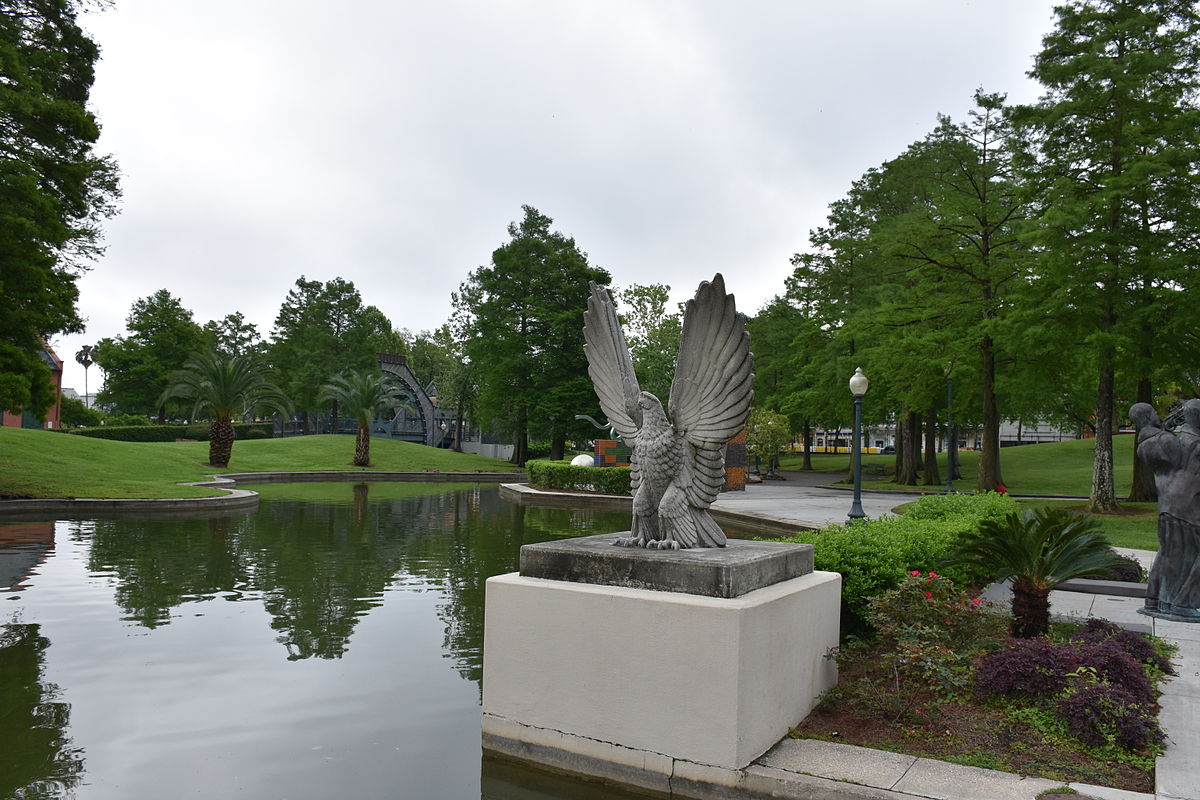
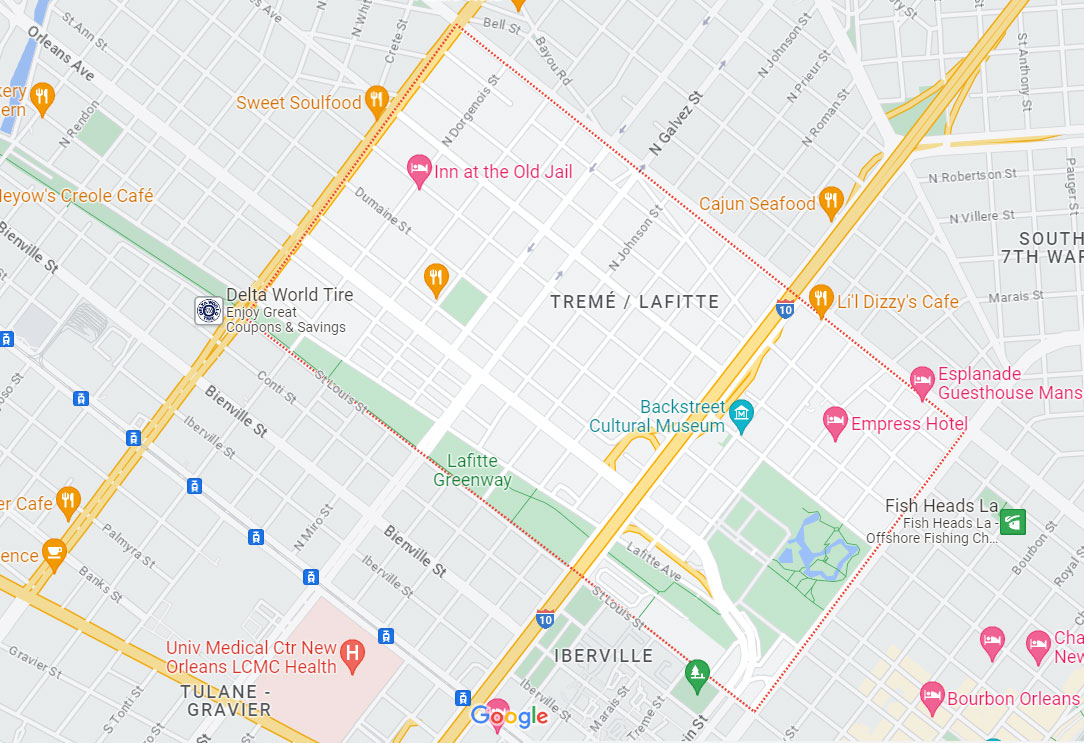
Where Is Tremé – Lafitte?
Originally known as Back of Town — because Tremé abuts the north side of the French Quarter, away from the Mississippi River — Tremé was renamed Faubourg Tremé in an effort to revitalize the area.
At the end of the 19th century, the Storyville red-light district, an area once known for its concentration of prostitution and sex-oriented businesses, was carved out of the upper part of Tremé. But the area that hosted the infamous district (bound by the streets of North Robertson, Iberville, Basin, and St. Louis Streets) is no longer considered part of the neighborhood. Neighborhoods next to Tremé include Mid-City’s Bayou St. John to the west, the French Quarter to the east, the Seventh Ward to the north, and Tulane – Gravier to the south.
Its boundaries are:
East: Esplanade Avenue
West: Louis Street
South: North Rampart Street
North: North Broad Street
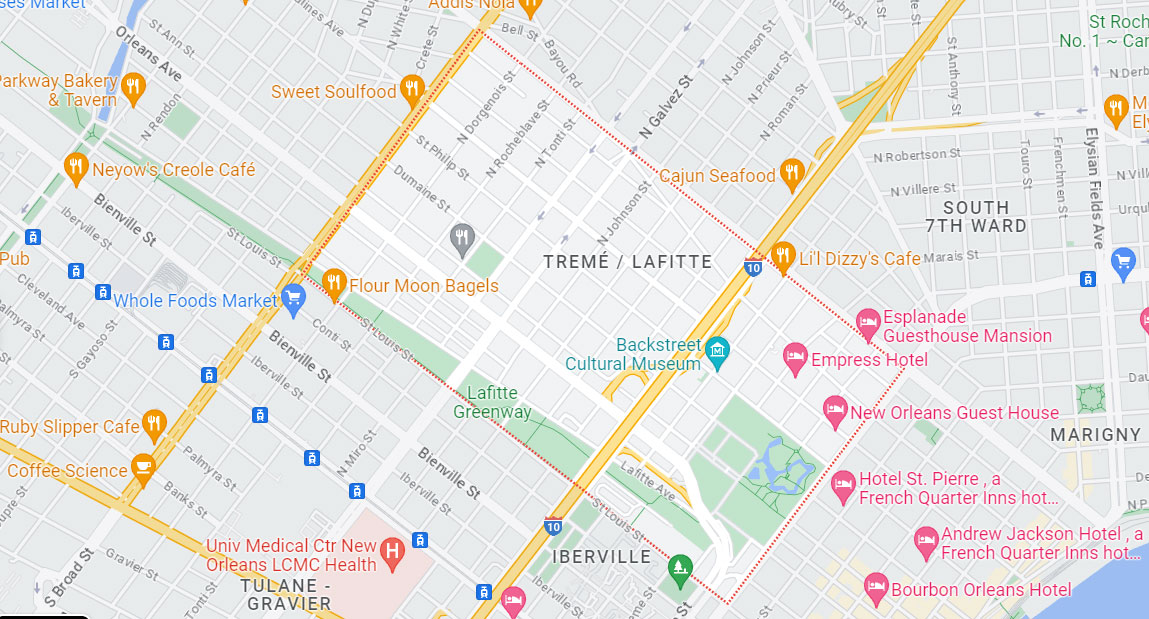
Homes for Sale in Tremé – Lafitte, New Orleans
Why Buy a Home in Tremé – Lafitte?
Tremé – Lafitte is a residential area next to the French Quarter. In Tremé, renovated Creole cottages mingle with small businesses, iconic restaurants and music venues, some of the nation’s most important landmarks, and the vast green space of Armstrong Park, known for its historic past and several popular annual festivals.
If you buy a home here, you’ll be in the thick of the action, especially during festival season and Mardi Gras. You can walk up to the sound of brass bands, spot Mardi Indians on Mardi Gras Day, and hear festival music from your porch. You would also be within walking distance of some of the best fried chicken in New Orleans (Willie Mae’s Scotch House) and other fine food and drink.
For all its events and visitors, Tremé is still a quiet and accommodating place to live. There are many things to love about this neighborhood.
Easy to Get Around. Tremé – Lafitte is very walkable and it is a biker’s paradise with miles of dedicated bike lanes. Public transportation is also easy, with a few bus routes serving Tremé – Lafitte and the streetcar line is within walking distance.
Tremé – Lafitte
Attractions
Amble through Louis Armstrong Park and Congo Square. The most prominent landmark of the neighborhood is Louis Armstrong Park’s Congo Square. Once known as Place des Nègres, Tremé residents gathered here on Sundays to meet and dance. For much of the 19th century, the square was also an open-air market. Here, too, bands played what would come to be known as jazz.
Visit the Backstreet Cultural Museum and the New Orleans African American Museum.
If you are interested in local culture and especially in the Indian traditions of Mardi Gras, the Backstreet Cultural Museum is a must. The museum contains a plethora of precious artifacts, memorabilia, films, and costumes unique to New Orleans. Various displays feature the Mardi Gras Indians, jazz funerals, and social clubs.
Attend Sunday gospel and jazz mass at St. Augustine Church. Every Sunday, there’s an incredible mass featuring a gospel and jazz choir at St. Augustine Church, the centerpiece of the oldest African-American Catholic parish in the country.
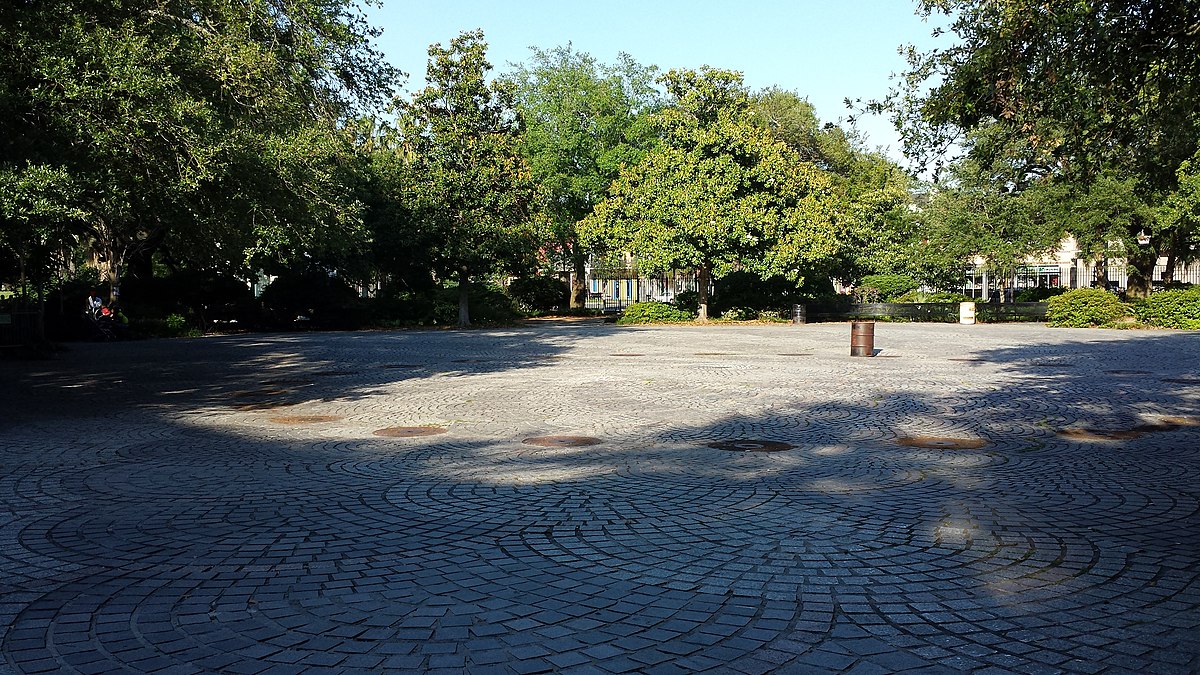
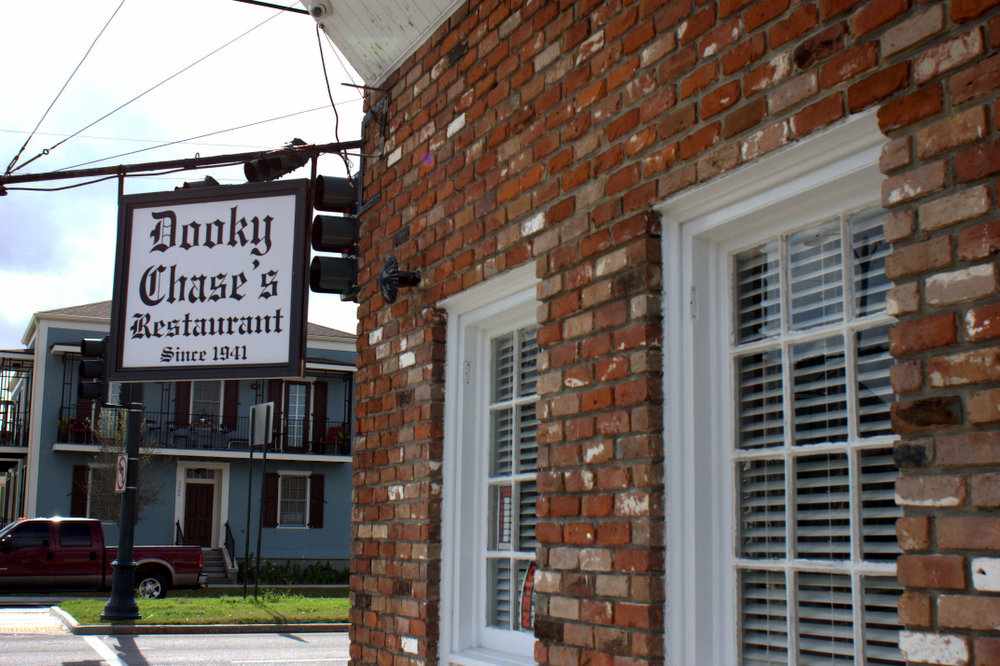
Enjoy soul food. Food and especially Creole and soul food is delicious and plentiful in Tremé. Check out Lil Dizzy’s, Dooky Chase’s, and the wet batter chicken Willie Mae’s Scotch House (temporarily closed because of fire damage, but planning to reopen). Enjoy upscale Cajun served at Gabrielle Restaurant or charbroiled oysters and fried chicken at Bertha’s Place Bar and Restaurant.
Tour St. Louis Cemetery #1. Established in 1789, this is the oldest cemetery in New Orleans. The aboveground tombs, some of which go back to the French colonial days, contain the remains of many old Creole families and prominent citizens. These include Ernest Nathan “Dutch” Morial, the first African-American mayor of New Orleans; and Marie Laveau, the legendary voodoo queen.
Listen to incredible music. The beloved local musician Ernie K-Doe opened the Mother-in-Law Lounge in 1994 and named it after his smash hit “Mother-in-Law.” After he died, his wife Antoinette kept it open. After she died, famous local trumpeter Kermit Ruffins reopened the iconic bar as Kermit’s Mother-in-Law Lounge in 2014. Ruffins often hosts barbecues and plays with his band here.

History of Tremé – Lafitte, New Orleans
Most residents of Tremé were free people of color. St. Augustine Church, the oldest black church in the nation, was founded on land owned by free people of color. Long before the civil rights movement of the 1950s and 1960s, the residents of Tremé were fighting for their own civil rights. They created the civil rights group Comité des Citoyens, known for its sponsorship of a St. Augustine parishioner, Homer Plessy, the plaintiff who unsuccessfully challenged state-enforced racial segregation in the historic 1896 Supreme Court decision Plessy v. Ferguson.
During the Jim Crow era, African-American New Orleanians were not allowed to shop at white-owned stores. So, residents created their own business district along oak-lined Claiborne Avenue, which thrived until the construction of the I-10 in 1969 displaced residents and decimated businesses. As an homage to the oak trees that were removed in order to build the interstate, trees have been painted on the I-10’s support columns. But Tremé remained vibrant and strong. It was the home of civil rights leaders, business owners, doctors, teachers, musicians, and artists. Mardi Gras Indians still came out, and second lines still weaved through the streets.
Today Tremé – Lafitte is on the upswing, with a number of historic houses being restored. It’s not being gentrified as quickly as some other New Orleans neighborhoods. The Historic Faubourg Tremé Association has been instrumental in fighting to make it illegal to use whole-home properties as short-term rentals.
Tremé – Lafitte is a perfect neighborhood for lovers of New Orleans culture who appreciate architectural elegance at prices that are still affordable.
